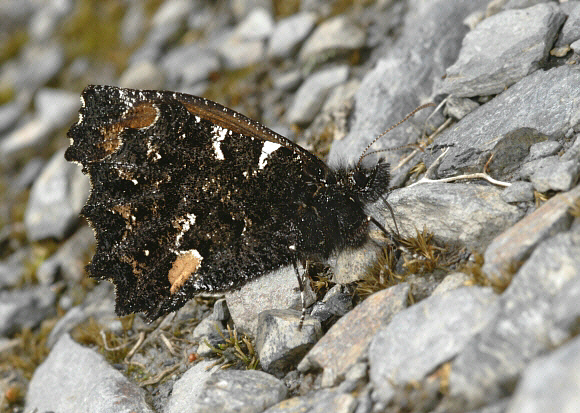
Introduction
There are 1100 known species of Satyrinae in the neotropical region. About 570 of these are placed in the subtribe Pronophilina – a diverse group of high altitude cloudforest butterflies, all of which are confined to the neotropical region. The vast majority are found only in the Andes, but 4 species are known from the Atlantic cloudforests of Brazil, and there are a further 6 species that are endemic to Guatemala, Costa Rica or Mexico. More oddly there is one genus Calisto that is found exclusively on the Caribbean islands of Cuba and Hispaniola.
The genus Steremnia comprises of 11 small dark butterflies, which are variously distributed across the cloudforests of the Andes from Colombia and Venezuela to Bolivia. They have a characteristic angular fw apex, and many including monachella also have deeply scalloped hindwings.
Steremnia monachella is known from Colombia, Ecuador, Peru and Bolivia.
Habitats
This attractive species occurs at altitudes between about 2000-3000m, in cloudforest and transitional cloudforest / grassland habitats on the eastern slopes of the Andes.
Lifecycle
The lifecycle appears to be unrecorded. The following generalisations are applicable to the subtribe Pronophilina and probably also apply to Steremnia: The eggs are globular, white or pale greenish white, and laid singly on the foodplants or on surrounding vegetation. The larvae are typically pale brown, marked along the back and sides with narrow dark stripes, and tapering towards each end. The head is large in proportion to the body and has two short forward-pointing horns. The tip of the abdomen is equipped with a pair of caudal prongs which are used to flick the frass away from the feeding area. The larvae of all known Pronophilina feed on Chusquea – a genus of bamboo which grows in thickets, mainly along the courses of streams.
Adult behaviour
Males can be found on sunny mornings, in the company of other Pronophilines, imbibing moisture from roadside gullies, ditches and patches of damp decaying vegetation. The specimen illustrated above is feeding at a bird dropping which it is moistening with its own urine. Using this system it is able to extract mineral salts from the dropping. This method of dissolving dry mineral deposits with urine is also used frequently when drinking from rocks, road surfaces or decomposed vegetation.
